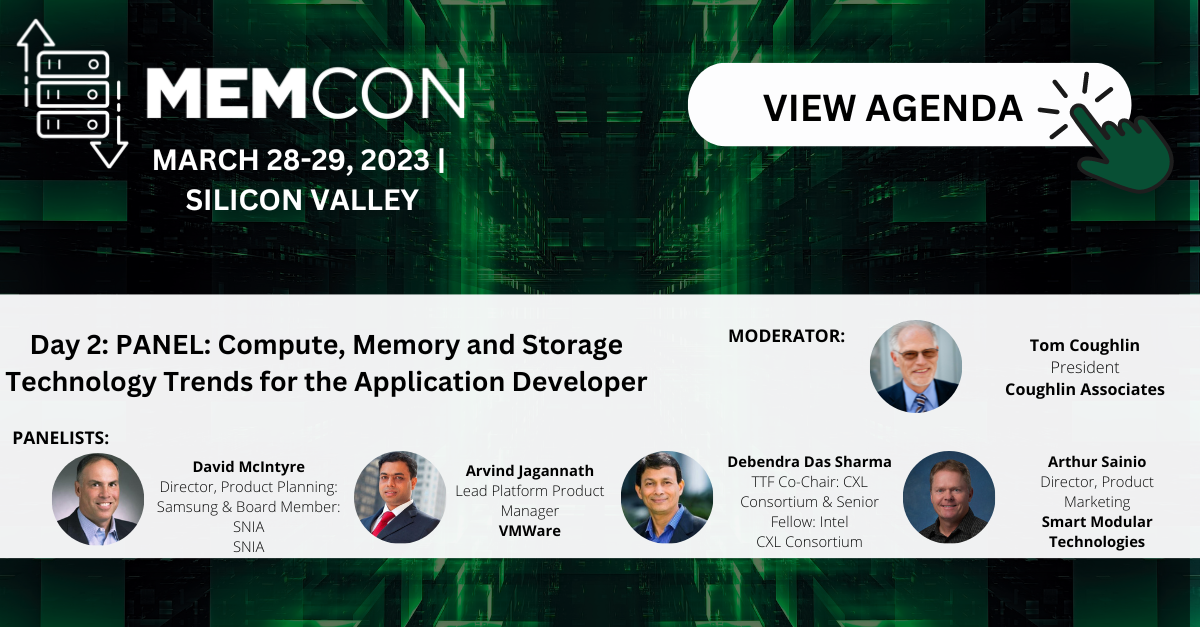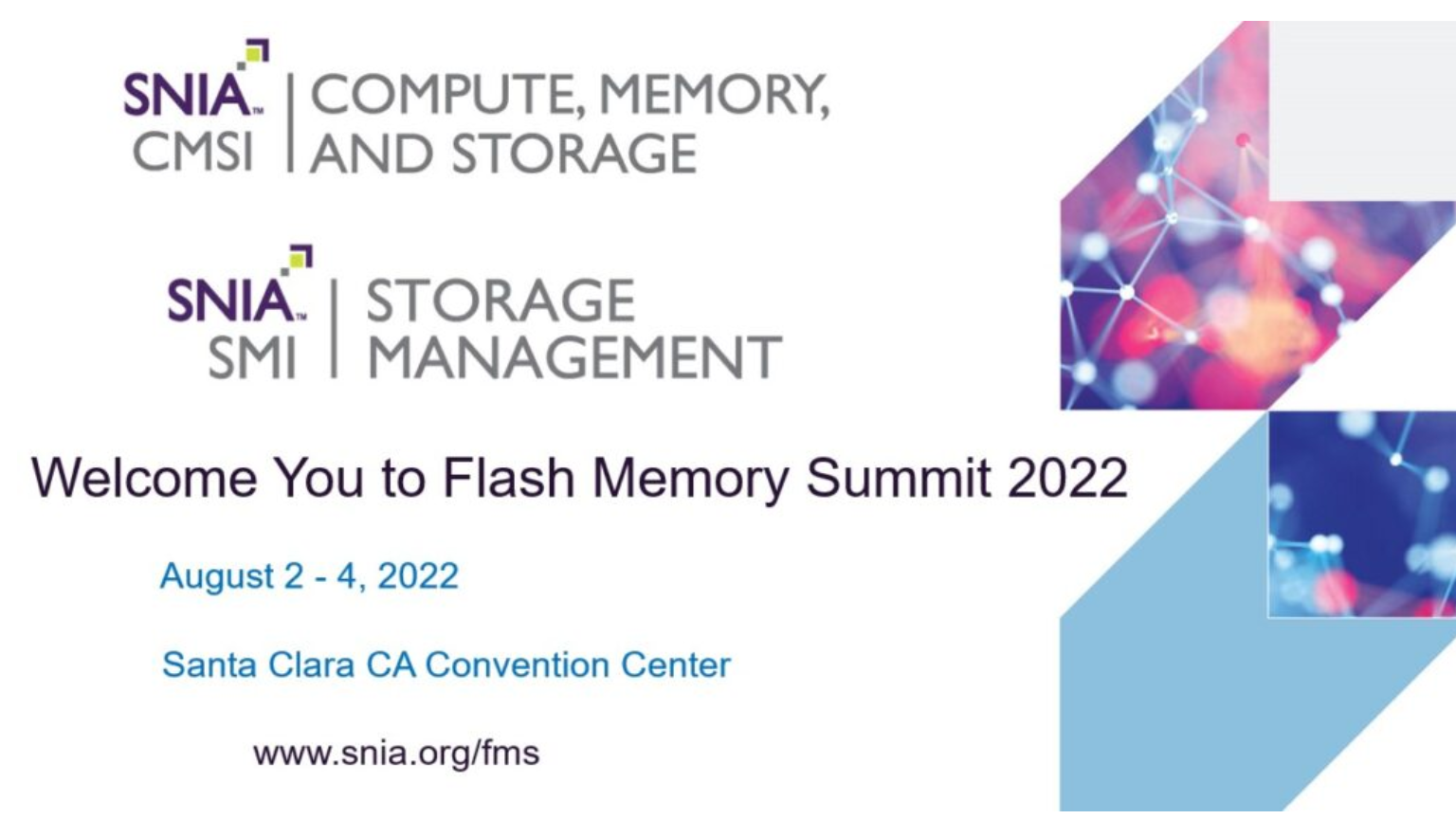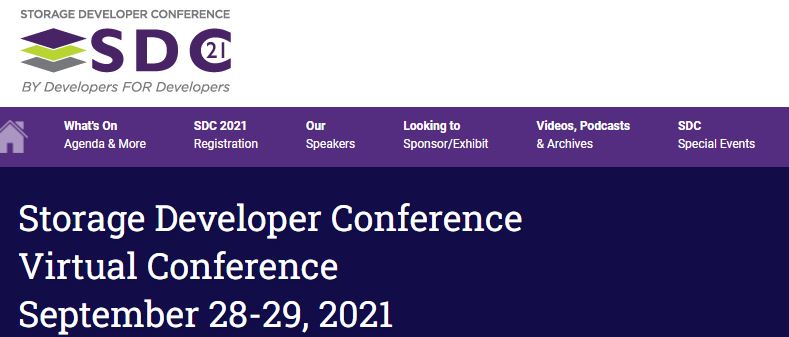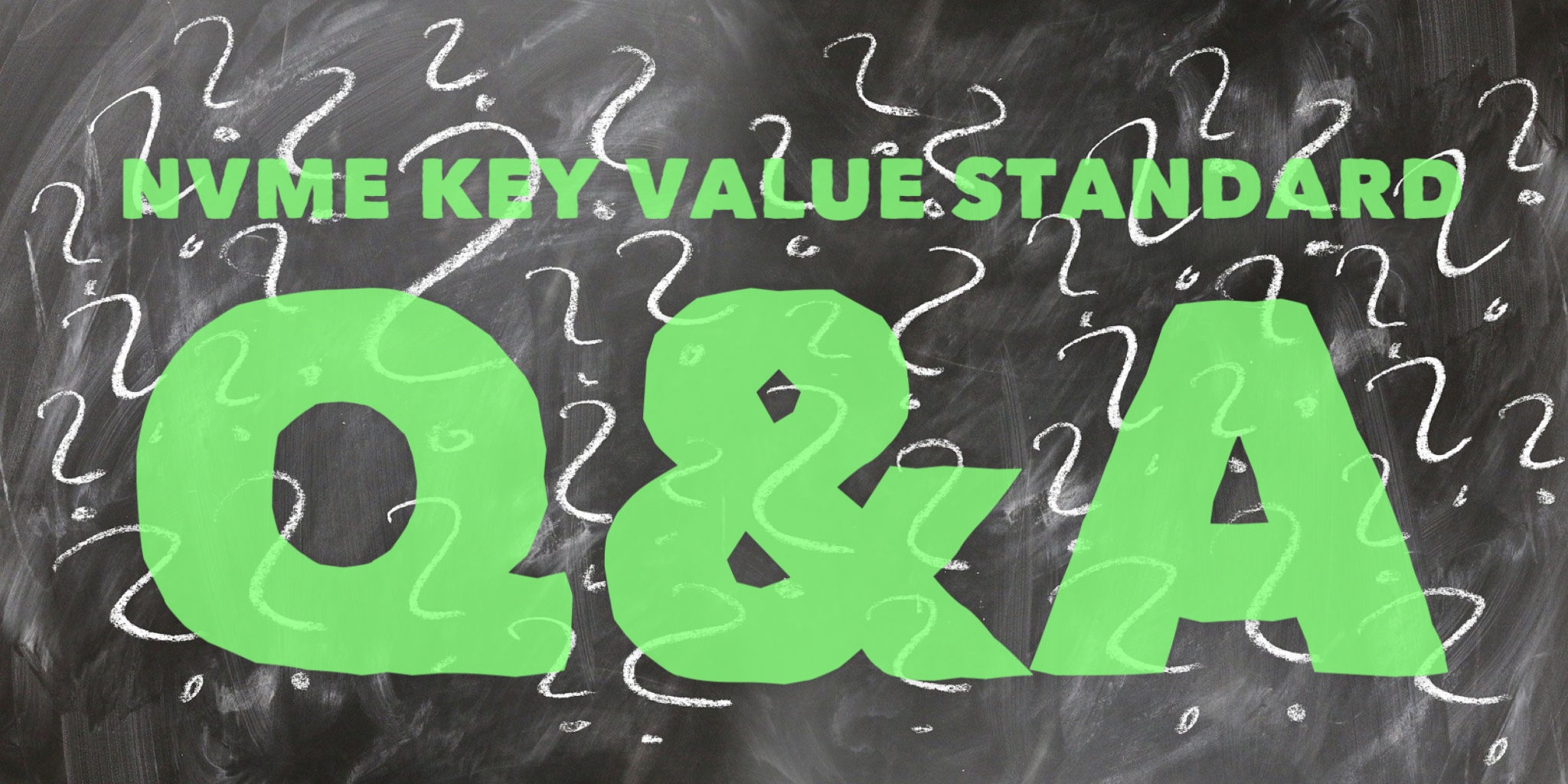 , and UCIe
, and UCIe .
“We’re excited to welcome executives, architects, developers, implementers, and users to our 11th annual Summit,” said David McIntyre, C+M+S Summit Co-Chair, and member of the SNIA Board of Directors. “We’ve gathered the technology leaders to bring us the latest developments in compute, memory, storage, and security in our free online event. We hope you will watch live to ask questions of our experts as they present, and check out those sessions you miss on-demand.”
Memory sessions begin with Watch Out – Memory’s Changing! where Jim Handy and Tom Coughlin will discuss the memory technologies vying for the designer’s attention, with CXL
.
“We’re excited to welcome executives, architects, developers, implementers, and users to our 11th annual Summit,” said David McIntyre, C+M+S Summit Co-Chair, and member of the SNIA Board of Directors. “We’ve gathered the technology leaders to bring us the latest developments in compute, memory, storage, and security in our free online event. We hope you will watch live to ask questions of our experts as they present, and check out those sessions you miss on-demand.”
Memory sessions begin with Watch Out – Memory’s Changing! where Jim Handy and Tom Coughlin will discuss the memory technologies vying for the designer’s attention, with CXL and UCIe
and UCIe poised to completely change the rules. Speakers will also cover thinking memory, optimizing memory using simulations, providing capacity and TCO to applications using software memory tiering, and fabric attached memory.
Compute sessions include Steven Yuan of StorageX discussing the Efficiency of Data Centric Computing, and presentations on the computational storage and compute market, big-disk computational storage arrays for data analytics, NVMe as a cloud interface, improving storage systems for simulation science with computational storage, and updates on SNIA and NVM Express work on computational storage standards.
CXL and UCIe will be featured with presentations on CXL 3.0 and Universal Compute Interface Express
poised to completely change the rules. Speakers will also cover thinking memory, optimizing memory using simulations, providing capacity and TCO to applications using software memory tiering, and fabric attached memory.
Compute sessions include Steven Yuan of StorageX discussing the Efficiency of Data Centric Computing, and presentations on the computational storage and compute market, big-disk computational storage arrays for data analytics, NVMe as a cloud interface, improving storage systems for simulation science with computational storage, and updates on SNIA and NVM Express work on computational storage standards.
CXL and UCIe will be featured with presentations on CXL 3.0 and Universal Compute Interface Express On-Package Innovation Slot for Compute, Memory, and Storage Applications.
The Summit will also dive into security with a introductory view of today’s storage security landscape and additional sessions on zero trust architecture, storage sanitization, encryption, and cyber recovery and resilience.
On-Package Innovation Slot for Compute, Memory, and Storage Applications.
The Summit will also dive into security with a introductory view of today’s storage security landscape and additional sessions on zero trust architecture, storage sanitization, encryption, and cyber recovery and resilience. For 2023, the Summit is delighted to present three panels – one on Exploring the Compute Express Link
For 2023, the Summit is delighted to present three panels – one on Exploring the Compute Express Link (CXL
(CXL ) Device Ecosystem and Usage Models moderated by Kurtis Bowman of the CXL Consortium, one on Persistent Memory Trends moderated by Dave Eggleston of Microchip, and one on Form Factor Updates, moderated by Cameron Brett of the SNIA SSD Special Interest Group.
We will also feature the popular SNIA Birds-of-a-Feather sessions. On Tuesday April 11 at 4:00 pm PDT/7:00 pm EDT, you can join to discuss the latest compute, memory, and storage developments, and on Wednesday April at 3:00 pm PDT/6:00 pm EDT, we’ll be talking about memory advances.
Learn more in our Summit preview video, check out the agenda, and register for free to access our Summit platform!
The post 50 Speakers Featured at the 2023 SNIA Compute+Memory+Storage Summit first appeared on SNIA Compute, Memory and Storage Blog.
) Device Ecosystem and Usage Models moderated by Kurtis Bowman of the CXL Consortium, one on Persistent Memory Trends moderated by Dave Eggleston of Microchip, and one on Form Factor Updates, moderated by Cameron Brett of the SNIA SSD Special Interest Group.
We will also feature the popular SNIA Birds-of-a-Feather sessions. On Tuesday April 11 at 4:00 pm PDT/7:00 pm EDT, you can join to discuss the latest compute, memory, and storage developments, and on Wednesday April at 3:00 pm PDT/6:00 pm EDT, we’ll be talking about memory advances.
Learn more in our Summit preview video, check out the agenda, and register for free to access our Summit platform!
The post 50 Speakers Featured at the 2023 SNIA Compute+Memory+Storage Summit first appeared on SNIA Compute, Memory and Storage Blog.










 Summit topics include Memory’s Headed for Change, High Performance Data Analytics, CXL 3.0, Detecting Ransomware, Meeting Scaling Challenges, Open Standards for Innovation at the Package Level, and Standardizing Memory to Memory Data Movement. Great panel discussions are on tap as well. Kurt Lender of the CXL Consortium will lead a discussion on Exploring the CXL Device Ecosystem and Usage Models, Dave Eggleston of Microchip will lead a panel with Samsung and SMART Modular on Persistent Memory Trends, and Cameron Brett of KIOXIA will lead a SSD Form Factors Update. More details at
Summit topics include Memory’s Headed for Change, High Performance Data Analytics, CXL 3.0, Detecting Ransomware, Meeting Scaling Challenges, Open Standards for Innovation at the Package Level, and Standardizing Memory to Memory Data Movement. Great panel discussions are on tap as well. Kurt Lender of the CXL Consortium will lead a discussion on Exploring the CXL Device Ecosystem and Usage Models, Dave Eggleston of Microchip will lead a panel with Samsung and SMART Modular on Persistent Memory Trends, and Cameron Brett of KIOXIA will lead a SSD Form Factors Update. More details at 
 , 1.2, 2.0 CXL
, 1.2, 2.0 CXL 




Leave a Reply